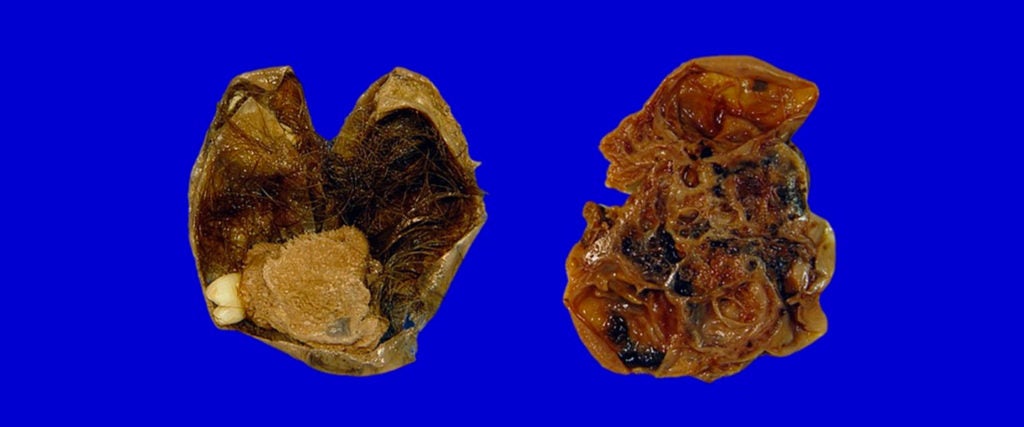Here’s a fun little concept for you: Imagine you had a tumor in your balls, and also that that tumor contained bones, hair and teeth. Teratomas, rightfully (and literally, translated from Greek) known as “monster tumors,” are precisely this, and they are indeed a real thing.
But fear not! Teratomas are typically benign, and as a recent study from University of California, San Diego, shows, monster tumors may hold some of the keys to understanding human development.
Teratomas are a rare form of tumor that most often occur in the tailbones of infants, as well as in the ovaries and testicles of adults. They impact around 1 in 20,000 to 40,000 births, and represent around 3 to 5 percent of all testicular tumors and 10 to 20 percent of ovarian tumors. Precise rates vary according to different studies and populations, but altogether, teratomas are relatively uncommon.
Nevertheless, they’re still terrifying. The result of stem cells forming a mass, teratomas can contain tissue from just about any region of the body. They regularly contain hair, muscle, skin, bone, teeth fragments and even bits of brain, organs or eyeballs. Again, somehow, the majority of these tumors are benign and can be removed with surgery. Because of their horrifying composition, though, they’re basically a goldmine for biological data.
In a paper published in the scientific journal Cell in early November, researchers at UC San Diego explained how teratomas can be used to understand human development. In their study, they injected immunodeficient mice with teratomas grown from human stem cells. Next, they sequenced the cells using gene editing technology to isolate the genes known to regulate development. In doing so, the researchers were able to gather information on the development of multiple different types of cells in one place.
This doesn’t mean a ton for regular folk just yet, but it does make it a helluva lot easier to study these cells for the future. It’s possible that teratomas may unlock some of the mysteries of the body and provide scientists with new capabilities in tissue engineering. As abject as a tumor in your balls containing brain matter and bone might be, at least it might be scientifically useful. Unlike your balls.

